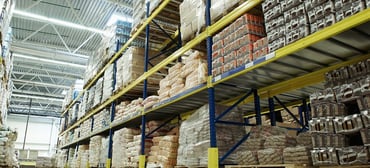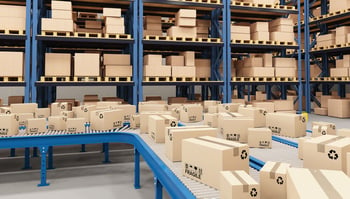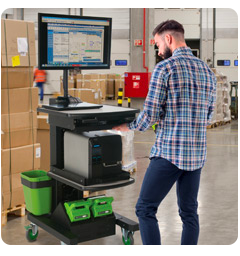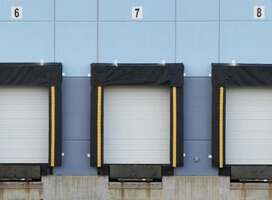
Running a warehouse is much more complex than it was in the past. Supply chain bottlenecks combined with increased online sales coupled with a growing expectation of fast shipping and delivery have put a ton of pressure on warehouses to perform. Just working a bit harder is unlikely to produce the results you need in such a competitive industry.
Of course, there’s no single best way to manage a warehouse. Much of what you do depends on the nature of your warehouse and the supply chain itself. But, there are certain principles that you may wish to apply and things you’ll want to avoid. To remain competitive and get the best performance possible, here are the top 10 warehousing mistakes you should try to avoid.
1. Poor Planning
What worked in the past is unlikely to work now or in the future. Things change rapidly in this industry, and it’s a guarantee that your competitors are adapting with new processes, procedures, and technology.
Set some time aside at least once or twice per year to evaluate your warehouse processes. Review your efficiency according to established metrics and see where you have opportunities for improvement. Then, make plans to change your operations for the better.
2. Inaccurate Inventory Tracking
 One of the simplest but most common mistakes warehouses make is failing to keep accurate inventory records. This shouldn’t be too difficult in our digital age. Today’s warehouses should have a robust warehouse management system (WMS) that integrates things like inventory management and tracking, order fulfillment, shipping, receiving, reverse logistics, and more. These systems can even integrate with other technology solutions, like mobile carts, wireless headsets, and automated shelving or conveyors.
One of the simplest but most common mistakes warehouses make is failing to keep accurate inventory records. This shouldn’t be too difficult in our digital age. Today’s warehouses should have a robust warehouse management system (WMS) that integrates things like inventory management and tracking, order fulfillment, shipping, receiving, reverse logistics, and more. These systems can even integrate with other technology solutions, like mobile carts, wireless headsets, and automated shelving or conveyors.
3. Poor Safety Procedures
Another warehouse mistake that can be costly is not following recommended health and safety guidelines. Even if your warehouse is organized, it may not be completely safe. If an employee trips over debris in an aisle, falls from a ladder, or sustains a repetitive motion injury, this will cause serious problems for everyone. The employee may not be able to work, and your business could be in trouble with OSHA.
4. Lack of Staff Training
 Time constraints and tight budgets are common excuses for not providing workers with adequate training. Sending employees onto the warehouse floor without training on safety and proper work procedures is a recipe for disaster.
Time constraints and tight budgets are common excuses for not providing workers with adequate training. Sending employees onto the warehouse floor without training on safety and proper work procedures is a recipe for disaster.
Investing in training can not only reduce workplace injuries. It can improve productivity and efficiency. At the same time, proper training lets workers know you care about their wellbeing, which can improve employee retention rates.
5. Not Having a Clean Facility
Layers of dust on shelves, debris in the aisles, and pieces of broken equipment lying around are all apparent signs of a warehouse that doesn’t have cleanliness or tidiness as one of its priorities. An unclean warehouse is more likely to be unsafe, congested, unproductive, and a place where employees aren’t happy.
You can remedy this by making cleanliness one of your standards. Every employee shift should have a cleaning schedule with checklists. And a deep cleaning of the facility should take place periodically.
6. Failure to Optimize Picking
One of the more common mistakes that warehouses make is failing to optimize order picking pathways. Cost of labor is one of your largest and most variable inputs. So efficient operations are vital to your profitability.
You can reduce wasted movement by ensuring you are optimizing worker time and energy. You should store products that are often bought together in close proximity. You can also use solutions like mobile headsets to make the picking process hands-free for employees.
7. Holding Excess Inventory
 Having too much inventory on hand can be costly in more ways than one. It costs money to store the inventory. And excess items that don’t sell could expire or become obsolete. Too much stuff also clutters your warehouse and makes it less efficient. Reduce your inventory levels as much as possible. One way you can do this is by receiving larger orders of goods in smaller batches.
Having too much inventory on hand can be costly in more ways than one. It costs money to store the inventory. And excess items that don’t sell could expire or become obsolete. Too much stuff also clutters your warehouse and makes it less efficient. Reduce your inventory levels as much as possible. One way you can do this is by receiving larger orders of goods in smaller batches.
8. Understocking Popular Items
While you shouldn’t hold excess inventory, it’s also a bad idea to understock items that sell well. When you have frequent stockouts, consumers will get frustrated with their shopping experience and search out a competitor. Use analytics to closely track your inventory and sales. You can even trigger automatic reordering when stock levels reach a predetermined level so that you never run out.
9. Overlapping Shipping & Receiving Areas
When you are hurting for warehouse space, it might seem like a luxury to have separate areas for shipping and receiving. But not separating these areas can lead to chaos, mistakes, and inefficiency that cost you time and money.
During peak season or on a particularly busy day, you might have items just received in your warehouse mistaken for those meant to be shipped out, or vice versa. Either mistake can lead to wasted time and erosion in customer satisfaction. Separate these areas into different bays or docks if you can.
10. Ignoring Technology Solutions
 While you don’t necessarily want to need to spend millions to achieve a lights-out automated warehouse or get the shiniest new toys, technology can improve your operations significantly. Every warehouse should have a warehouse management system (WMS). Beyond that, integrating it with some other technology solutions can improve your processes and results. For example, mobile powered carts can reduce unnecessary trips to the printer, reduce errors, and double a worker’s output on the warehouse floor.
While you don’t necessarily want to need to spend millions to achieve a lights-out automated warehouse or get the shiniest new toys, technology can improve your operations significantly. Every warehouse should have a warehouse management system (WMS). Beyond that, integrating it with some other technology solutions can improve your processes and results. For example, mobile powered carts can reduce unnecessary trips to the printer, reduce errors, and double a worker’s output on the warehouse floor.
Final Thoughts
Missteps are likely to happen in any business. But when your warehouse makes mistakes, it can have a ripple effect throughout the supply chain that can be catastrophic for your company’s reputation and results.
Fortunately, with some planning, the right process, and the use of technology solutions, these mistakes can be minimized or avoided completely to keep your warehouse running smoothly.

|
10 Tips to Improve Your Warehouse Receiving Process |